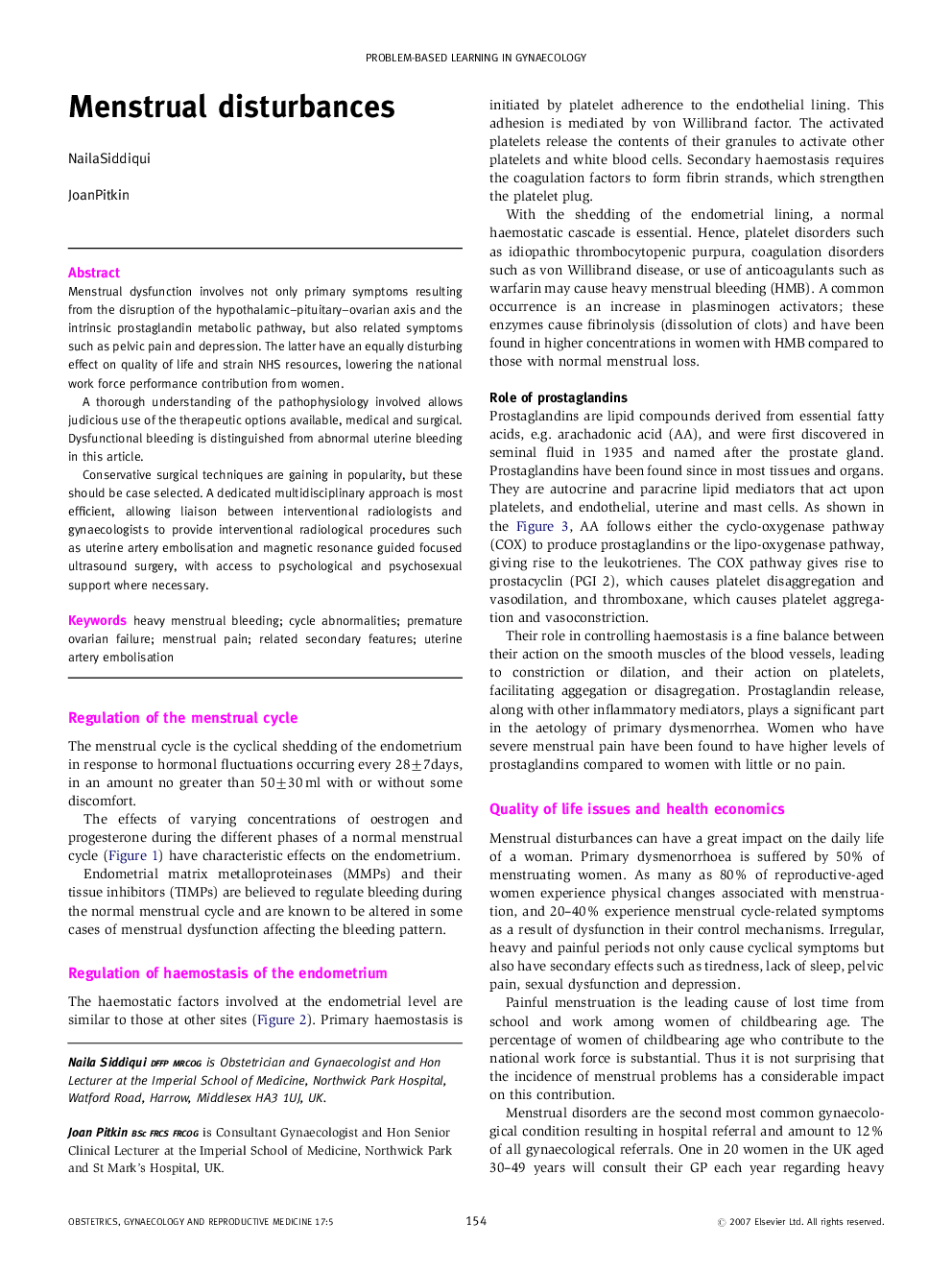| Article ID | Journal | Published Year | Pages | File Type |
|---|---|---|---|---|
| 3967408 | Obstetrics, Gynaecology & Reproductive Medicine | 2007 | 9 Pages |
Menstrual dysfunction involves not only primary symptoms resulting from the disruption of the hypothalamic–pituitary–ovarian axis and the intrinsic prostaglandin metabolic pathway, but also related symptoms such as pelvic pain and depression. The latter have an equally disturbing effect on quality of life and strain NHS resources, lowering the national work force performance contribution from women.A thorough understanding of the pathophysiology involved allows judicious use of the therapeutic options available, medical and surgical. Dysfunctional bleeding is distinguished from abnormal uterine bleeding in this article.Conservative surgical techniques are gaining in popularity, but these should be case selected. A dedicated multidisciplinary approach is most efficient, allowing liaison between interventional radiologists and gynaecologists to provide interventional radiological procedures such as uterine artery embolisation and magnetic resonance guided focused ultrasound surgery, with access to psychological and psychosexual support where necessary.
